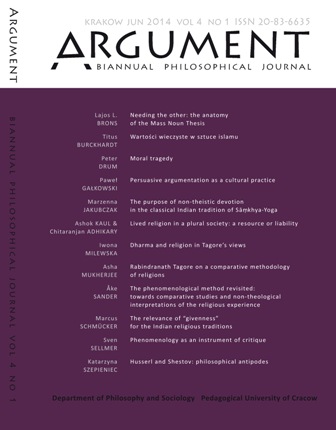Reflections on the role of phenomenology as an instrument of critique
Reflections on the role of phenomenology as an instrument of critique
Author(s): Sven SellmerSubject(s): Philosophy, Phenomenology
Published by: Wydawnictwo Uniwersytetu Komisji Edukacji Narodowej w Krakowie
Keywords: methodology; reductionism; deconstruction; experience; phenomenological method; Hermann Schmitz
Summary/Abstract: The present paper aims to show that the phenomenological method is a crucial methodological element of all research that is based on the interpretation of utterances or texts based on experiences, such as religious studies. Following the neophenomenological school, the notion of “phenomenon” is understood in a radically relative way: “A phenomenon for a person at a given point of time is a state of affairs for which this person cannot — in spite of trying to vary the presuppositions she makes as much as possible — withdraw the belief that it is a fact” (Schmitz, 2003: 1). Starting from this notion, phenomenology may fruitfully criticise two common strategies: reduction and construction. The first one tries to reduce experiences to allegedly more fundamental processes like electrical impulses in neural nets. Here the phenomenologist must object that in doing so without preceding phenomenological analysis the reductionist will lose large parts of potentially important information. As for the second strategy, constructions — in the sense of presuppositions, ready-made concepts, etc. — are present in all texts that are meant to express an experience. In order to describe the underlying experience more adequately, phenomenological researchers have to remove as many constructions as possible. In this way they not only produce a description that is “closer” to the experience (though they can never hope to fully grasp it), but they also pave the way for comparison and dialogue across religions and cultures.
Journal: ARGUMENT: Biannual Philosophical Journal
- Issue Year: IV/2014
- Issue No: 1
- Page Range: 35-42
- Page Count: 8
- Language: English

